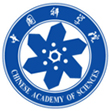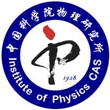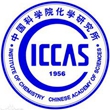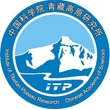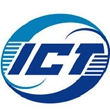Sessions 4:Geo-sciences
Tandong Yao
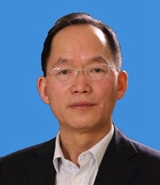
Character introduction
Tandong Yao has been focusing on and internationally acknowledged of the study on glacier and environment on the Tibetan Plateau. He has carried out different programs related to environment in the past 30 years. Some of them were carried out in cooperation with American, French, German, Japanese, Swedish and Nepalese scientists. He has led over 100 field trips to the Tibetan Plateau, drilling ice cores and investigating glacier melt and glacial-induced hazards. His research has been published in Nature, Science, Nature Climate Change, Nature Geosciences, PNAS, Review of Geophysics, Bulletin of the American Meteorological Society, Journal of Geophysical Research, Geophysical Research Letters, etc. One of his recent works reveals that, under the impact of global warming, glaciers in the Tibetan Plateau and surrounding regions are melting rapidly and spatially different because of the interaction between the Indian monsoon and westerlies, with the most rapid melt in the southeast Tibetan Plateau and the least melt in the northwest Tibetan Plateau. He has successfully organized many international conferences and workshops, as well as several major national and international research programs. Through the effort of the TPE program which he is chairing, the Tibetan Plateau is internationally regarded as one of the emerging Hot Spots for environmental research and global sustainability. He has been awarded the Vega Medal for his pioneering work in the Tibetan Plateau. He has also won numerous other research awards and honors at national and international levels.
Topic: The Asian Water Tower change and its impact in a Warming World
Abstract The Third Pole is geomorphologically a high pole that covers the Tibetan Plateau and its surroundings. It is home to numerous glaciers and the origins of over ten major Asian rivers, and thus is widely acknowledged as the Asian Water Tower. Dramatic changes are ongoing in this region in a warming climate. Temperature here is increasing twice faster than the global average, implying the sensitivity of the TP to climate warming. Warming-induced glacier melt, ice collapses, glacial lake expansions, and glacial lake outburst floods are rapidly destabilizing the Asian Water Tower, threatening regional socio-economic progress and affecting the livelihood of over 3 billion people in this region.
Our study has found the accelerated melt of the Asian Water Tower, which caused imbalance of the Asian Water Tower and is accompanied by emerging new disasters. The ever-stronger glacier melt is considered the biggest threat to the Asian Water Tower. Extensive lake expansion tremendously decreases solid water of the Asian Water Tower. Warming-induced Asian Water Tower imbalance is causing new disasters such as ice collapse. Two glaciers in Aru lake basin, Ngari, which collapsed consecutively on July 17 and September 21, 2016, have destroyed pastures and buried 9 local people and hundreds of livestock. Another ice collapse took place in the Yarlung Tsangpo River on October 16, 2018 has blocked the river, and thus formed a dammed lake which destroyed the bridge and high way in the area. The change of Asian Water Towers is also closely related to the environment of the Central Asia and South Asia through big rivers and big lakes. The disappearing Aral Sea is a typical example of human activity impact and the Asian Water Tower changes and is a bitter lesson to correctly adapt to Asian Water Tower changes at the earliest possibility.
A national program entitled “the Second Tibetan Plateau Scientific Expedition and Research (STEP)” has recently been initiated to investigate the processes and mechanisms of environmental changes in the region, with special focuses on water, ecosystem and human activity. By cooperating with the Third Pole Environment (TPE) program and the PAN-Third Pole Environment (PAN-TPE), the STEP will allow the best minds in the region and beyond to work jointly on the Asian Water Tower changes and their impact as well as adaptation strategy. It also aims to advice on policy makers from the scientific perspective to ensure the safety and resilience of the Asian Water Towers with a more efficient green development mode for a beautiful Third Pole.
Our study has found the accelerated melt of the Asian Water Tower, which caused imbalance of the Asian Water Tower and is accompanied by emerging new disasters. The ever-stronger glacier melt is considered the biggest threat to the Asian Water Tower. Extensive lake expansion tremendously decreases solid water of the Asian Water Tower. Warming-induced Asian Water Tower imbalance is causing new disasters such as ice collapse. Two glaciers in Aru lake basin, Ngari, which collapsed consecutively on July 17 and September 21, 2016, have destroyed pastures and buried 9 local people and hundreds of livestock. Another ice collapse took place in the Yarlung Tsangpo River on October 16, 2018 has blocked the river, and thus formed a dammed lake which destroyed the bridge and high way in the area. The change of Asian Water Towers is also closely related to the environment of the Central Asia and South Asia through big rivers and big lakes. The disappearing Aral Sea is a typical example of human activity impact and the Asian Water Tower changes and is a bitter lesson to correctly adapt to Asian Water Tower changes at the earliest possibility.
A national program entitled “the Second Tibetan Plateau Scientific Expedition and Research (STEP)” has recently been initiated to investigate the processes and mechanisms of environmental changes in the region, with special focuses on water, ecosystem and human activity. By cooperating with the Third Pole Environment (TPE) program and the PAN-Third Pole Environment (PAN-TPE), the STEP will allow the best minds in the region and beyond to work jointly on the Asian Water Tower changes and their impact as well as adaptation strategy. It also aims to advice on policy makers from the scientific perspective to ensure the safety and resilience of the Asian Water Towers with a more efficient green development mode for a beautiful Third Pole.
Previous Michael J. Benton
Next R. Lawrence Edwards
